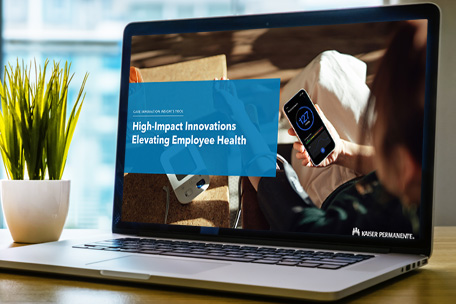Health care innovation insights for business
High-Impact Innovations Elevating Employee Health

Explore innovation resources
Additional resources you may find helpful

KP Care & Value
Providing superior member experiences

Article
Health equity: A data-driven approach to improving workforce health

Article
High-risk pregnancies: Improving outcomes, reducing costs, and redefining support
Find the right plan for your business. Call 1-877-305-7933




